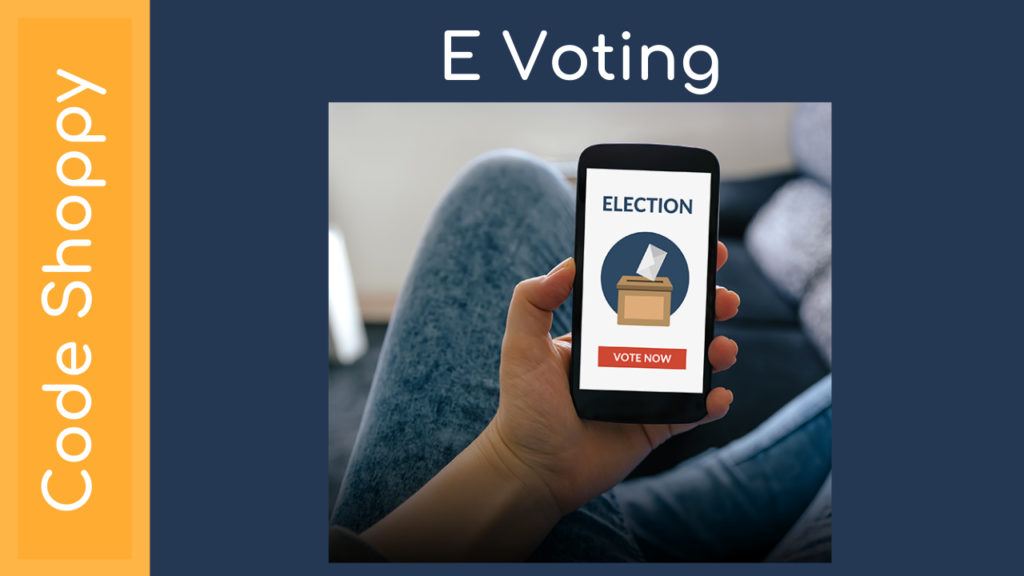Online Voting System Project Application
Group Signature Entanglement in E-voting System

Xuet al. [4] proposed a scheme which supports anonymity of the voters in the e-voting system by applying the concept of blinding and grouping signature. This scheme seems to be easier than the other quantum signature schemes because i t d o e s not involve entanglement. In t h e e-voting system, the message has to be signed by the manager of the office. However, the content of the message d o e s not h a v e to be readable by any person other than the owner of the message (blind signature scheme). Also, Xu’s paper uses the grouping signature to provide anonymity of voters in the e-voting system, whereas the voter information, such as location information, has to be secure and non-readable by any person. Some e-voting systems could be applied in different branches and offices in different locations, so signing the message from a specific manager might reveal the location information of the voter. Thus, by applying grouping signature with different managers on the same message, f tracing the sender could be eliminated. However, the verifier cannot know the identity of the signer; he/she can only verify the validity of the signature. This paper is different than some other schemes that propose different services. Xuet al. [4] proposes a blind signature scheme using a group signature scheme for a distributed e-voting system without using the entangled state concept, and this scheme can represent a high level of efficiency. The authors explained some disadvantages, such as using a symmetric scheme. Also, the inspector in this scheme is the only person who can verify the message which makes the scheme elastic with only e-voting systems. In [10], the authors proposed a new quantum protocol that provides anonymous voting with anonymity check. This protocol has two main characteristics. First, the value of a voter’s vote is unknown to other voters and the tallyman. Second, a non-exaggeration t e c h n i q u e h a s b e e n i m p l e m e n t e d to prevent malicious voters from voting twice. Each voter makes a binary decision (0,1); 0 means no and 1 means yes. There is a tallyman who collects the ballots and announces the results. The main idea, after the voting process, is that the ballots arereturned to voters again to allow for two voters to check the anonymity of the vote counting process bypreparing an entangled state of two ballots. Thus, any attempt by a curious tallyman to g a i n information about voting results leads to th e d e st r uc tio n of the entanglement, which can be detected by the voters. The entangled state is generated using one of four Bell bases to create a Bell state as follows: The four Bell bases are:√√√√The voters carry out the ballot test: – The voters who have chosen to vote measure their qubits in computational basis. If there is a difference from the sent ballot, they state the ballot test failure. – On the other hand, the voters who have chosen to check the anonymity make the measurement of their qubits in the Bell basis. If there is a difference from the Bell state, they state the ballot test failure. Suppose a curious tallyman makes an additional measurement of qubits to gain information about voters. For example, to learn the vote of voter i, the easiest way is by measuring the ith qubit in computational basis. If voter i has chosen to vote, this attack will be unnoticed. But if voter i has chosen to check the anonymity with voter j, this leads their state to be transformed into (0,1) or (1,0) with equal probability of 0.5, which means anonymity check test failure. Therefore, the curious tallyman will be detected. Xiaoqiang proposed in [11] a blind signature scheme that is based on quantum computing. The scheme combines proxy and blind signatures. The scheme consists of four parties. They are Bob, who is the message signer; Charlie, who is the message owner; Alice, who prepares the proxy warrant message; and Trent, who is responsible for delivering the two particles to Bob and Charlie and verifying the signature.
The authors used BB84 quantum protocol for key distribution. They applied quantum entanglement for the signature generation and verification process. Using a one-time pad encryption algorithm provides unconditional security and prevents eavesdropping. In [12], the authors propose a blind quantum scheme based on a two-particle entangled system. It combines proxy and blind signatures and consists of three parties. Alice is the message owner, Bob is the message signer, and Charlie is the message arbitrator and Bob’s proxy. This scheme can be used in privacy-related protocols. The authors used entanglement to the blind signature generation process and the verification process. The key distribution method is not explained in this paper.
We proposed a new scheme that enhanced an existing one that solves the check back e-voting anonymity to solve the problem of denying the value of the ballot. By implementing the concept of the entanglement between two random voters, the signer candetermine the correct value of the ballot. However, this scheme has a simple weakness which shows up when the signer (Bob) tries to contact the second voter (Nancy) asking her for the qubit, but she does not respond. We are planning to extend this scheme to address this problem by keeping the original qubits in a separate database somewhere in the system. Code Shoppy